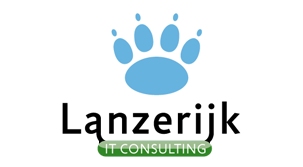
I have been working as a Software Engineer at SAMCo for the past 5 years with a focus on Oracle SQL/PL. I have been Scrum Master of the Application Development team since the start and Scrum Master for both the Performance and Data & Analytics teams for the past year. In 2018 the company i am working at, started setting up an Azure Cloud environment for Data & Analytics. I have been involved in setting up the environment and creating code in the Data Factory environment. I am a Azure DevOps administrator.
The Application Development team’s main responsibility is ingesting market data for the Data Hub, cleaning and blending the data, and then making it available to the front office teams. This work requires both technical and market data business knowledge. The team also works on projects. Three large projects that I worked on were: onboarding external managers, IBOR reform and SFOR ESG.
I have built several solutions using Alteryx (prototyping tool) and TIBCO Spotfire (reporting tool).
I am well versed in the theory of Agile Scrum (subject of my dissertation) and have a lot of hand-on experience as a Scrum Master.
I have been working in IT since 1995 and as a consultant since 2007.
| Technology | Years |
| Scrum Master and Agile | 11 |
| Microsoft Azure cloud | 2 |
| Azure DevOps | 2 |
| Oracle SQL/PL1 | 5 |
| Markit EDM | 1 |
| TIBCO Business Works | 8 |
| Service Orientated Architecture | 11 |
| Mainframe | 18 |
I have worked in these roles:
Software Engineer
Data engineer
Data Hub configurator
Business analyst
Senior TIBCO developer
SOA interface specialist
Lead Developer
Team leader / Project Manager
Architect
Certified Scrum Master (Agile)
Experience:
As a Software Engineer, I elicit and specify requirements, design software, develop software, test software, and maintain software. A software engineer is intimately involved with the business and has a good understanding of the business processes. This is in stark contrast to a software developer that only builds code based on given requirements. At SAMCo I do some business analysis work and am part of the weekly business analysis planning meetings. At SAMCo I develop code in Oracle SQL/PL, Alteryx, TIBCO Spotfire and to a lesser extent in Python.
As a Data Engineer, I design, build, and integrate data from various resources and then make it available to the Data Scientists. At SAMCo this means building pipelines in Azure Data Factory to place data in Azure Data Lake and using Azure Data Factory to make the data available to the Data Scientists.
As a Data Hub configurator, I configured the Markit EDM data hub implementation at Kempen to replace the existing data hub. I designed and built the web services between the data hub and the existing Tibco applications in EDM. I used Microsoft SQL Studio 2012 extensively.
As a Senior TIBCO developer, I built applications using Business Works (BW) that feed the front-end trading system of a large merchant bank. I have designed and built the Tibco interfaces between existing applications and the data hub.
As a SOA interface specialist, I use my extensive knowledge and expertise of different platforms, programing languages and methods, to deliver a SOA solution that is elegant, architecturally sound, and easy to maintain. I have a unique set of skills in that I am equally comfortable in the mainframe world as well as in the SOA world. My first experience with a proto-SOA was in 2002 using a 3-layer Java solution. In 2004 I designed the IFSA mainframe solution. In 2007 I worked as a developer on NN’s Java-based interfaces called Ibis. In 2008 I started working with TIBCO and since then I have worked on the mainframe side (SubStation, EMS API) and on the SOAP side (BW and AMX). I have worked with the Administrator tool to deploy TIBCO applications and used other tools to monitor queues.
As a lead developer I guided and motivated a team of up to five developers to produce efficient and maintainable code. During the years that my team produced IFSA interfaces for the Nationale Nederlanden (NN) mainframe systems, I ensured that all the interfaces were built to the same design using the same best practices. This meant that the interfaces were very easy to maintain because if a programmer had worked on one interface, she knew exactly how all the other 220 interfaces would work.
As team leader / project manager, I did the intakes for new interfaces and planned the work for my team. The intakes entailed meetings with many of the NN project managers and service managers, so that I could explain the interface architecture and how my team could facilitate them in connecting their systems to the new SOA. The challenge was to manage multiple projects running in parallel, as well as coach my developers and juggle time with production incidents.
As an architect I designed the IFSA mainframe interfaces using the supplied H84 components. I designed and built the prototypes for Provider and Requester interfaces, both for CICS and Batch. I designed the generic logging for the mainframe interfaces and the method for maintaining it. The design meant that a new interface could be built within hours, instead of weeks. The interfaces were designed to be very easy to maintain, resulting in a huge saving over the life of the interface.
I have a knack for looking at the requirements, the architectural blueprint of the organisation and the technology involved and then devise an elegant solution that is easy to maintain and can be readily reproduced.
In 2011 I was asked by NN to design the mainframe interfaces for TIBCO. The solution had to cater for CICS and Batch interfaces, Fire&Forget and Request/Reply patterns, both inbound and outbound. In the preceding years all the IFSA interfaces were built using coolgen (4GL COBOL generator). This was a further challenge, as the standard copybooks could not be used. After a few months I produced the Proof of concept upon which the whole migration project was based. The solution uses (among others) COBOL, CICS, coolgen, EMS API, SubStation, P2P queues, TIBCO BW, TIBCO AMX and WSDL.
As Certified Scrum Master, I first came to grips with the philosophy of Scrum in 2013 at NN, and then introduced it into my development team with great success. For most of the TIBCO migration project the project manager had been using the traditional waterfall method of project planning. It was successful to a certain extent, but we were missing our deadlines. I did a grassroots introduction of Scrum and after a few days the results were so visible that I asked the project manager if I could introduce Scrum formally. The last part of the project that we did, using Scrum, has been on target and the number of defects declined dramatically. The team functioned as a well-oiled machine and the development team members were very enthusiastic about achieving our common goal. As Scrum Master of this team, I believe Scrum is not just another project management fad, but the best way to manage software projects today.
I had the role of Scrum Master for two projects at Kempen & Co.
I currently run three scrum teams at SAMCo. I can do scrum using a whiteboard, using Jira, or using Microsoft Azure’s DevOps tool.
